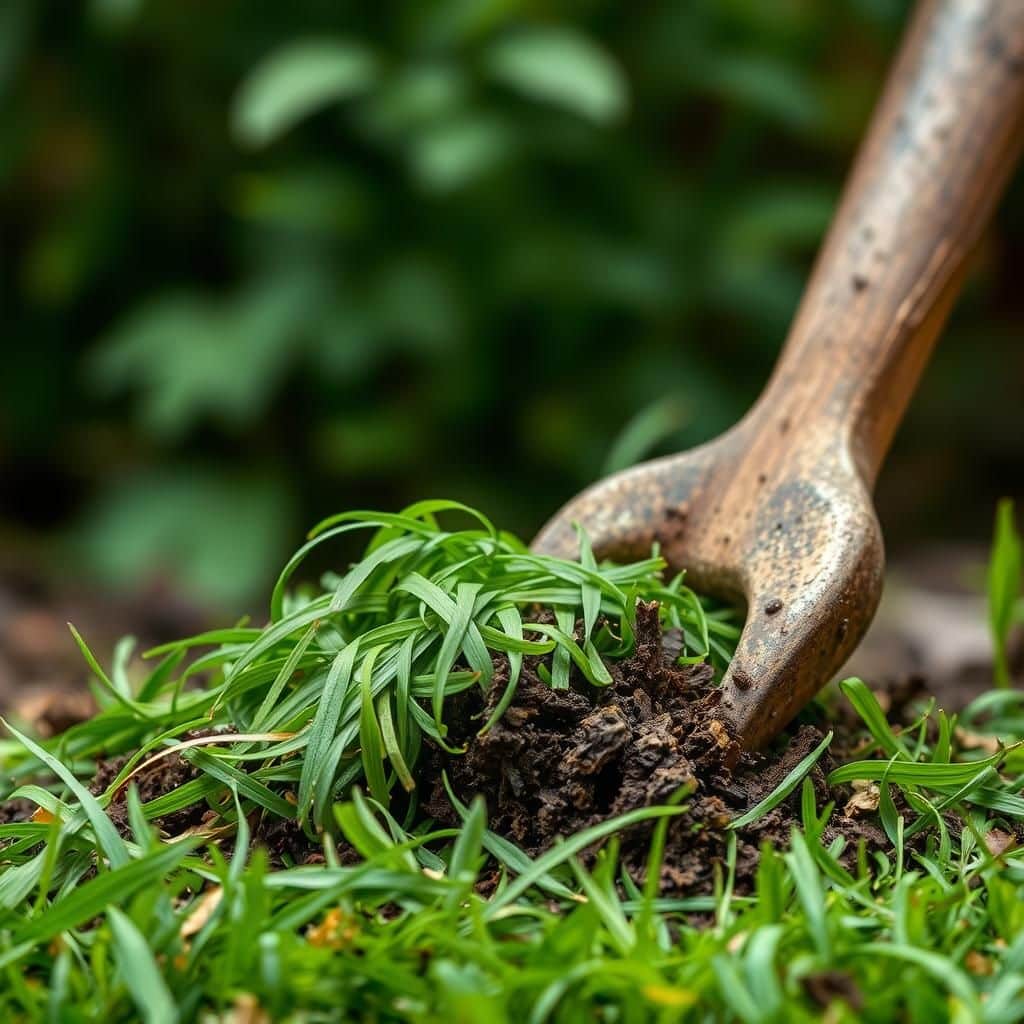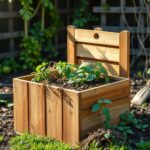Why Can't You Put Grass Clippings in Compost? Understanding the Reasons and Alternatives

When maintaining a healthy garden, many gardeners often wonder about the best practices for composting. One common question that arises is why grass clippings, a readily available organic material, should not be included in traditional compost piles. Understanding the reasons behind this guideline can help gardeners achieve better compost quality and avoid common pitfalls. In this article, we will explore the issues associated with composting grass clippings, including their nitrogen content, potential for matting, and nutrient imbalances. Additionally, we will discuss alternative methods for utilizing grass clippings to benefit your garden and lawn care practices.
Why Can't You Put Grass Clippings in Compost?
When considering the addition of grass clippings to your compost, it's important to understand that while they are rich in nitrogen, excess clippings can lead to compaction and anaerobic conditions. This can produce a foul odor and prevent the proper breakdown of materials in the pile. If too many clippings are added at once, they tend to clump together and form mats, which can inhibit air circulation necessary for aerobic microorganisms to thrive. Therefore, while grass clippings can be a beneficial compost ingredient when used in moderation and combined with browns like dried leaves or straw, overloading the compost with them can impair the composting process.
The Role of Nitrogen in Composting
Nitrogen is a crucial component in the composting process, as it aids in the breakdown of organic materials. Grass clippings contain high levels of nitrogen, which can be advantageous when balanced with carbon-rich materials. However, if too much nitrogen is present without sufficient carbon, it can create an imbalance that disrupts microbial activity and leads to odors.
Compaction and Airflow Issues
When you add too many grass clippings to your compost pile, they can become compacted, forming dense mats that restrict airflow. This compaction can lead to anaerobic conditions, where the lack of oxygen causes the pile to smell bad and become less effective in breaking down materials. Maintaining good aeration is essential for successful composting, as it supports the activity of aerobic microorganisms that decompose organic material efficiently.
Balancing Carbon and Nitrogen Ratios
Achieving the right balance between carbon and nitrogen is key to effective composting. Grass clippings are high in nitrogen, but unless they are mixed with carbon-rich materials (such as leaves, cardboard, or straw), the compost pile can become too nitrogen-heavy. A well-balanced ratio, often recommended at about 30:1 carbon to nitrogen, ensures a healthy composting environment that promotes decomposition while preventing undesirable odors and imbalances.
See also:
How to Use Grass Clippings Wisely
To incorporate grass clippings without the negative effects, it is suggested to use them in moderation. Adding thin layers of clippings interspersed with other brown materials can improve their effectiveness in the compost. Additionally, allowing clippings to dry out slightly before adding them can help prevent clumping. Consider using a mulch or compost bin that allows for better airflow to maintain a healthy compost environment.
Common Compost Problems with Grass Clippings
Excessive grass clippings can lead to various problems in a compost pile, including odor issues, slow decomposition rates, and the attraction of pests. If the pile becomes too wet and compacted, it can create conditions conducive to pathogens and other undesirable microorganisms. It’s important to monitor the moisture levels and ensure that the pile is turned regularly to maintain health and avoid these common pitfalls associated with grass clippings.
| Problem | Causes | Solutions |
|---|---|---|
| Odor Issues | Excess nitrogen, anaerobic conditions | Balance with carbon-rich materials |
| Slow Decomposition | Compacted grass clippings | Mix layers, increase aeration |
| Attracting Pests | Foul odors, excess moisture | Turn pile, monitor moisture |
Exploring the Nutritional Balance in Compost
Understanding the limitations of grass clippings in compost is crucial for maintaining a healthy nutritional balance in your compost pile. While grass clippings can add valuable nitrogen, they can also introduce an excessive amount of moisture and create a dense mat that prevents airflow. This can lead to compaction and a slow decomposition process, potentially causing odor issues and hindering the breakdown of other organic materials. Moreover, using them in moderation and mixing them with carbon-rich materials is essential to ensure that your compost remains aerated and does not become overly wet or anaerobic.
Excess Nitrogen Content
Grass clippings are rich in nitrogen, which is an essential nutrient for plants, but too much can upset the balance in compost. When clippings are added in large quantities, they can result in a nitrogen overload, leading to an imbalance where carbon-rich materials are insufficient to properly decompose, inhibiting the overall composting process.
Moisture Retention Issues
Adding a substantial amount of fresh grass clippings to compost can create moisture retention problems. Their high water content not only increases the humidity in the pile but can also lead to anaerobic conditions, which are detrimental to the composting process. This increased moisture can result in a slimy texture and unpleasant odors, making it less appealing for gardeners.
See also:
Risk of Fungus and Odor
When grass clippings are layered improperly, they can create an environment conducive to the growth of fungus and bacteria that thrive in low-oxygen settings. This can produce foul odors and disrupt the decomposition process, causing your compost to become more of a nuisance than a helpful resource. Monitoring the compost pile for signs of mold or bad smells is vital in preserving its effectiveness.
Importance of Aeration
Aeration is essential for effective composting, and grass clippings can hinder this if they are not managed correctly. When clumps of wet clippings settle together, they can block airflow, preventing oxygen from reaching the microorganisms essential for decomposition. Ensuring that grass clippings are mixed properly with other compost materials will help maintain adequate air circulation and promote a healthier compost environment.
Sustainable Alternatives to Grass Clippings
Considering alternatives to using grass clippings in your compost can help you achieve a more balanced compost mix. Materials like dried leaves, straw, or shredded paper can serve as effective substitutes that provide necessary carbon without the risks associated with excess nitrogen and moisture from fresh clippings. Combining these alternatives strategically can ensure a well-rounded compost that thrives.
Questions from Our Readers
Why can't you put grass clippings in compost?
Grass clippings can actually be composted, but they should be added in moderation due to their high nitrogen content. When grass clippings are piled too thickly, they can create a mat that prevents proper aeration, leading to a smelly, anaerobic condition in the compost pile.
What happens if you add too many grass clippings to compost?
Adding too many grass clippings can result in a compacted mass that limits airflow, which is essential for the decomposition process. This can lead to a situation where the compost emits a strong odor and produces bad bacteria, which is not desirable for healthy compost.
See also:
How can I properly use grass clippings in my compost?
To use grass clippings effectively, it's recommended to mix them with other types of compost materials, especially brown materials like dry leaves or straw. This balance will help maintain an appropriate carbon-to-nitrogen ratio, ensuring that the compost pile stays aerated and decomposes efficiently.
Are there any alternatives to composting grass clippings?
Yes, there are several alternatives to composting grass clippings, such as using them as a mulch to retain moisture in garden beds or fertilizing lawns directly by leaving them on the grass. This practice, known as grasscycling, can return nutrients to the soil without the need for composting.

If you want to read more articles like Why Can't You Put Grass Clippings in Compost? Understanding the Reasons and Alternatives, we recommend you check out our Compost category.
Leave a Reply
Related Articles